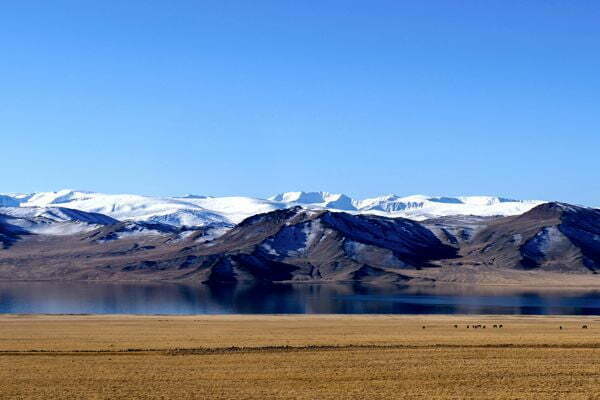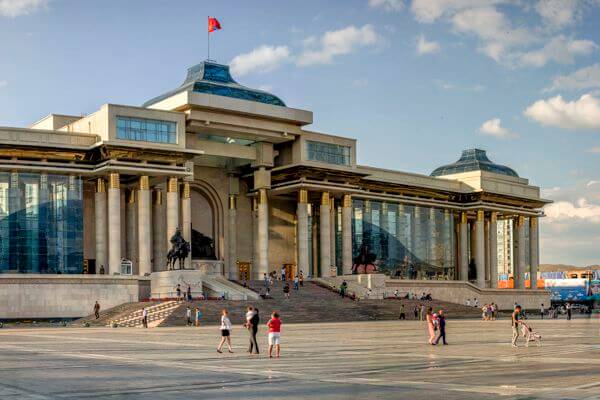Gobi Desert in Winter
(8 days)
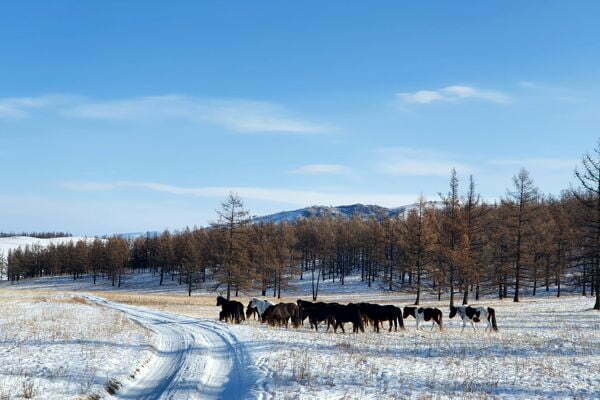
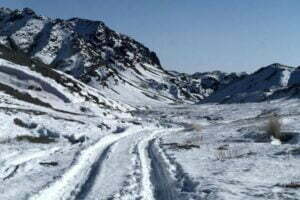
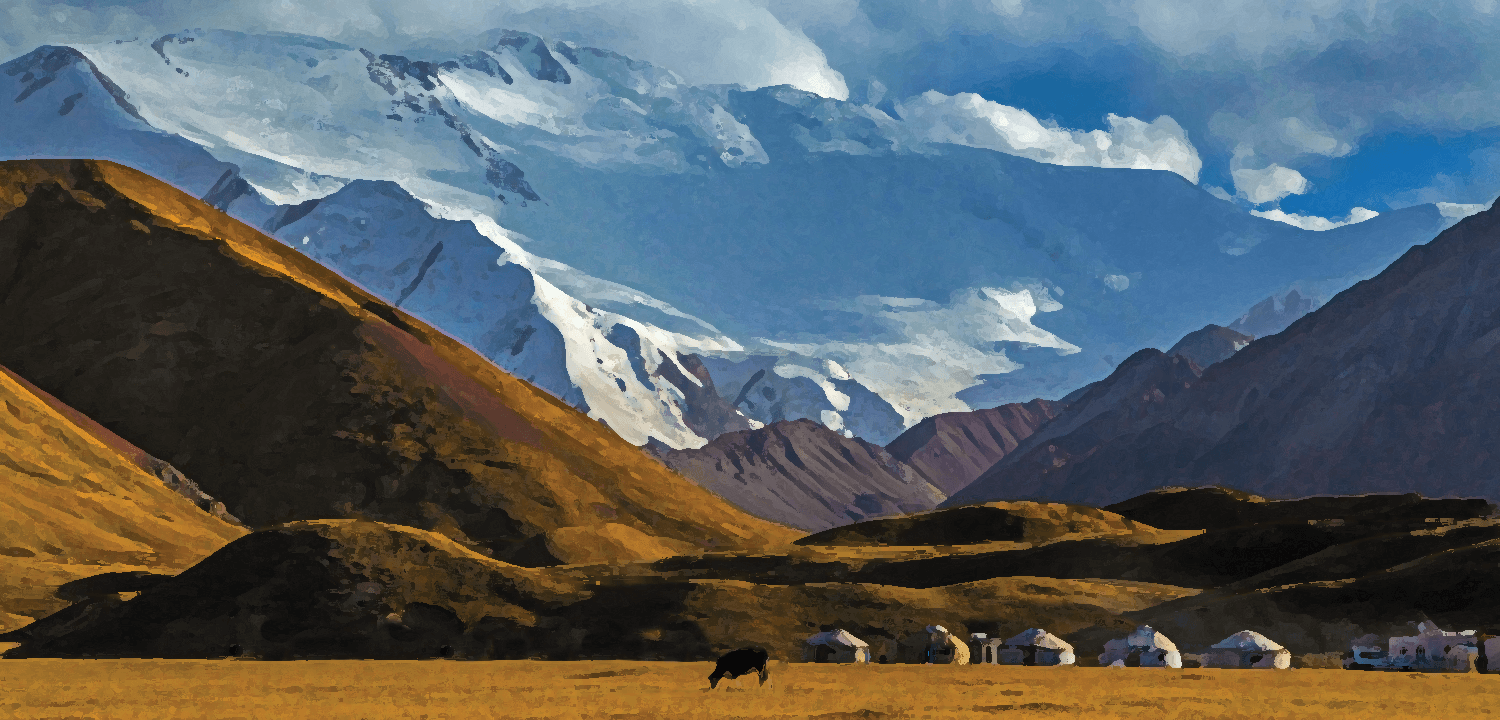
Detailed description

Baga Gazriin Chuluu
The first stop will be 250 kilometers south in the lovely region of Baga Gazriin Chuluu. It’s a big granite formation smack dab in the center of Mongolia’s sandy plain.
The remains of a small monastery known as Delgeriin Choir Monastery can be found on an open plain. You will be entering à Ger for the first time, and you will be greeted by a massive 12-walled structure. Monks use the ger, which is richly decorated and carved, to chant during the colder seasons when the stone monastery becomes too cold to be inside.
You can drive and hike around the area in the late afternoon. You’ll walk between massive endlessly piled granite rocky hills that appear to be placed, and see the picturesque ruins of a small monastery hidden in a peaceful little protected valley. In the rocks of Baga Gazriin Chuluu, there is a small spring known for its eye-healing properties. Try dripping some magic water into your eyes to cure your eyes like the locals do if not frozen.
(Family L, D)
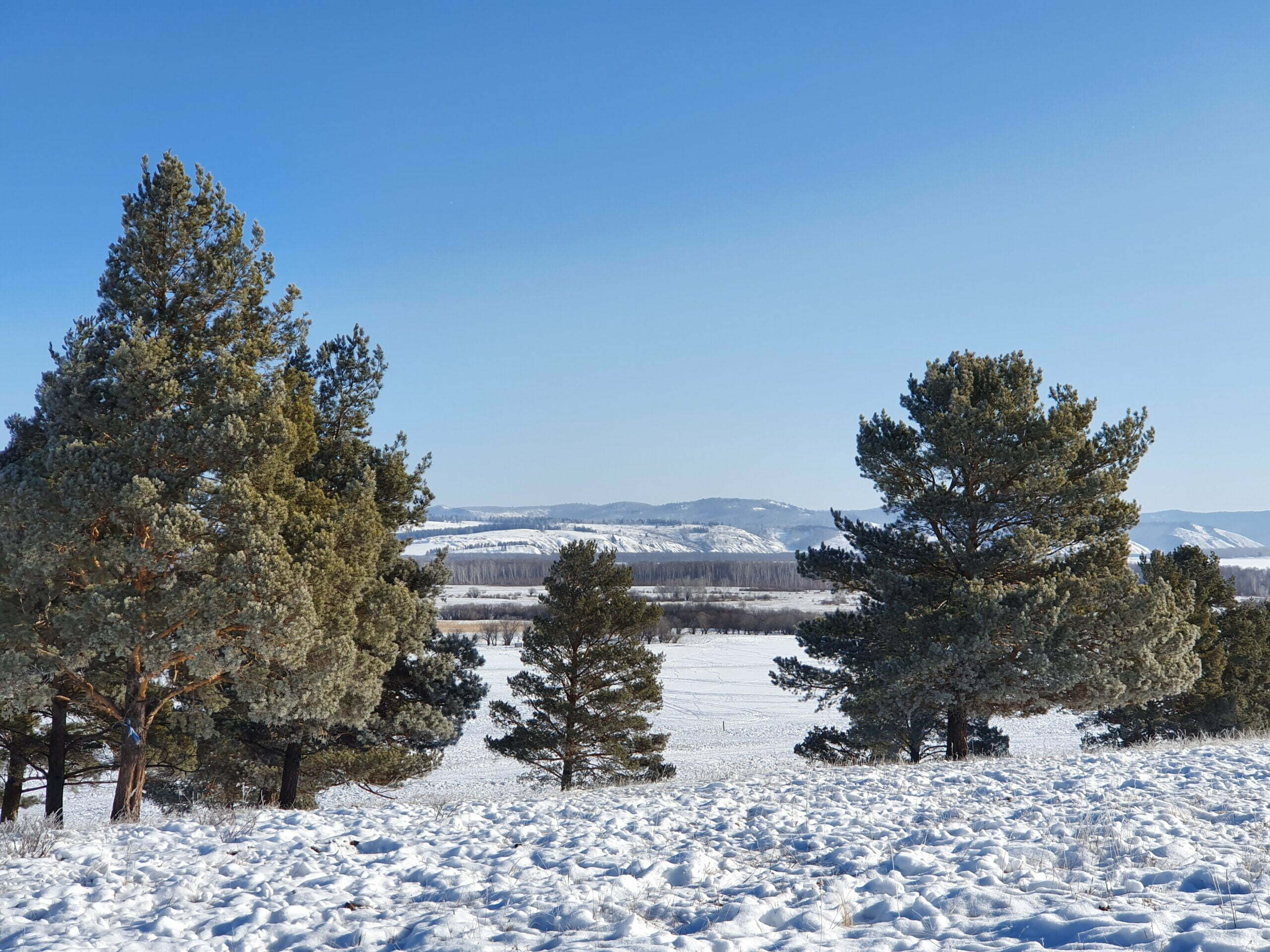

Yolyn Am
Today we will be driving to the South Gobi province town Dalanzadgad. The Gobi Desert extends through Mongolia and China, measuring 1,610 kilometers from southwest to northeast and 800 kilometers from north to south. It covers an area of 1,295,000 km2, making it the world’s fifth largest desert and Asia’s largest. although most of the Gobi is coated in bare rock rather than sand.
During the winter months, the Gobi is a cold desert with frost snow on its dunes. In addition to being far north, it is situated on a plateau between 910 and 1,520 meters above sea level, which leads to the cold temperatures. The Gobi receives around 194 millimetres of rain per year on average. In the winter, snow blown from the Siberian Steppes enters parts of the Gobi, providing additional moisture. The Gobi experiences temperature extremes ranging from –40°C in the winter to +50°C in the summer due to these winds.
We’ll take a trip through the majestic Altai Mountain Range’s breath-taking gorges. The Yolyn Am located in the Gobi Gurvansaikhan National Park, will be visited. Those green valleys were carved by ancient rivers.
Wild Argali sheep, Ibex, desert gazelles, and Golden Eagles are also possible sightings. We’ll also pay a visit to the park’s small museum, which houses a collection of dinosaur bones as well as local flora and fauna.
(Family stay B, L, D)
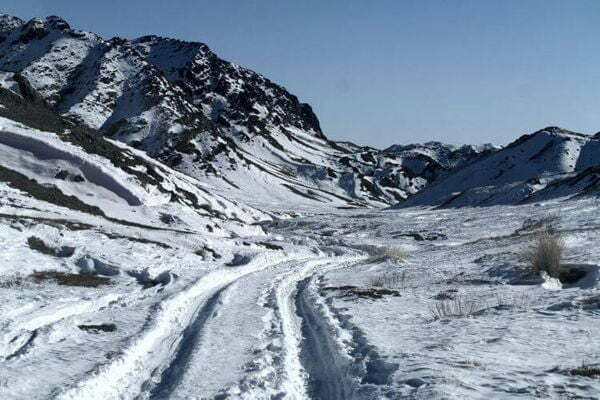

Khongoryn Els
After a hearty breakfast, we’ll travel 150 kilometers west to the Khongoryn Els. Mongolia’s biggest sand dunes can be found here. The dunes, which can reach a height of 275 meters in some areas, extend for more than 100 kilometers from East to West. The sands have appealing curves that end in a sharp point, resulting in wave patterns on the sand. The impressive black rocky mass of Sevrey Mountain can be seen behind the sand dunes. The Gobi Desert is the world’s coldest desert, with cold winds blowing almost the whole autumn, winter, and spring without any shelter uncovered in the plains, necessitating extreme survival methods of living. Gobi nomads are well-known in Mongolia for their dedication to hard work. Here, we’ll meet two humped camel breeding families and learn about their sweet, modest, hard-working, but incredible way of life.
(Family stay B, L, D)
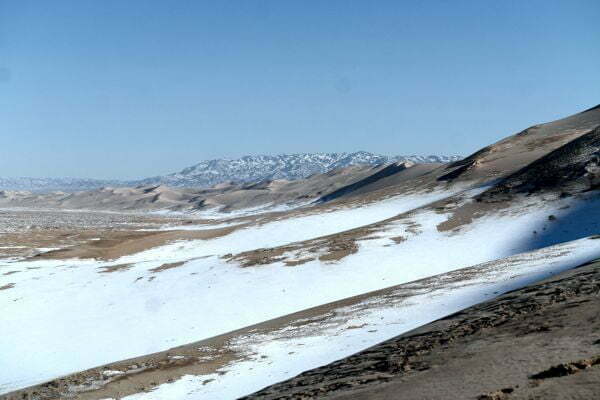

Bayanzag or Flaming Cliff
Today’s drive will take us to Bayanzag, also known as the “Flaming Cliffs,” the world-famous site where palaeontologist Roy Chapman Andrews discovered dinosaur bones and eggs. The local scenery is a lovely blend of rocks, red sand, and scrubs. Spend some time exploring the cliffs while you’re here.
We’ll spend some time walking around the cliffs here.
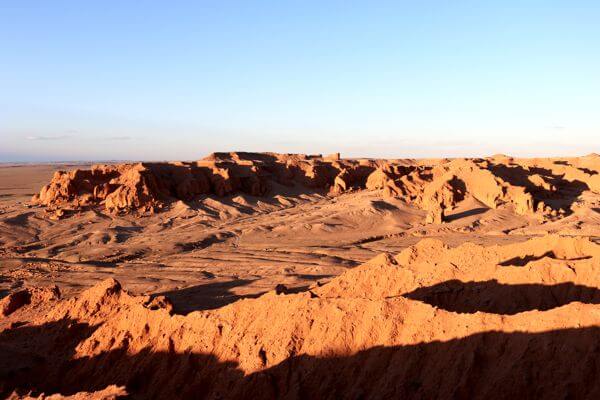

Ongiin and Khoshuu Monastery
Today you will travel to Ongi Monastery in the northwest. The ruins of two monasteries that face each other across the Ongi river in south-central Mongolia are known as Ongi.
The peace and beauty of the Delger Khangai Mountains will enchant you. On one side of the river, you’ll visit the ruins of Ongi Monastery.
This vast series of rocky hills cut by the river can be explored on foot. The monastery’s southern complex contains numerous administrative buildings as well as 11 temples. The northern complex, which was built in the 18th century, included 17 temples, including one of Mongolia’s largest temples. There were four Buddhist universities situated on the grounds.
The monasteries were constructed in the 17th century and were demolished in 1937. They were among Mongolia’s largest temples, housing over 1000 monks.
Today, a small monastery has been built between the ruins, and the remains of old monasteries are displayed in the Ger museum.
(Family B, L, D)
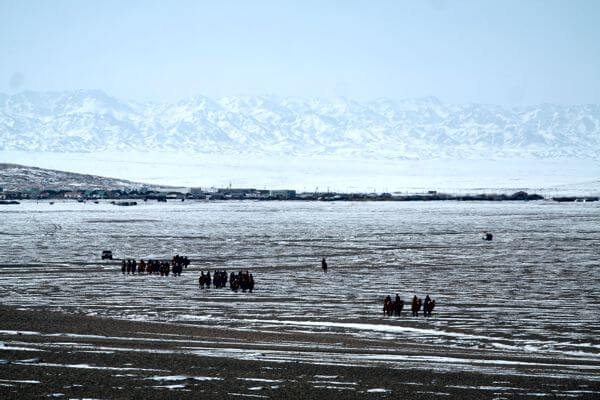

Orkhon valley and waterfall
Today we will drive westwards into the Orkhon Valley, where the Orkhon River flows. UNESCO has designated the valley as a world cultural heritage site because of ancient artifacts dating back to the early 6th century and even earlier. Moreover, the great Mongol empire expanded its capital Karakorum here from the 12th to 13th centuries. Furthermore, the pasture nomadic lifestyle has persisted, preserving both the historic and nomadic perspectives on life.
During the Quaternary period, a volcano erupted near the mouth of the Tsagaan Azarga, also known as the White Stallion River, and the lava flowed down the Orkhon valley, creating a 10-meter-thick layer of basaltic rocks. The Orkhon River cut through the basaltic layer twice, resulting in the formation of the canyon. At the beginning of this canyon lies the 20 meters high, 10-meter-wide waterfall now all frozen. Every November ice escalating competition takes place at a frozen waterfall.
(Family stay B, L, D)
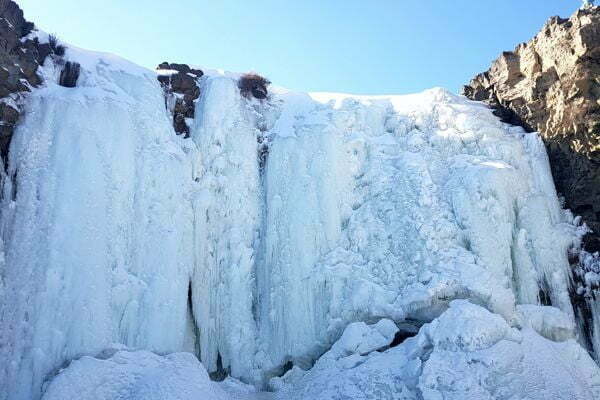

Karakorum
Today we will be driving to Karakorum (also called Kharkhorin). Karakorum was the capital of Genghis Khan’s Mongolian Empire in the thirteenth century. In 1220, Genghis Khan ordered the building of Karakorum on the ruins of Turug and Uigur cities in the Orkhon valley at the eastern end of the Khangai Mountains. During the reign of Ugedei Khan, it was completed 15 years later. The town was very multicultural and culturally accepting.
The silver tree, which was once part of Möngke Khan’s palace, has become Karakorum’s emblem. From 1220 to 1260, it was at its most prosperous. Karakorum existed as the great capital of the Euro-Asian Empire, with Mongolia at its heart, and as the epicenter of politics, trade, culture, faith, intellect, and diplomacy, as well as the most visible link in international relations.
Between 1260 and 1380, Karakorum lost its status as the capital of the Great Mongolian Empire and became Mongolia’s capital. When Kublai Khan and his younger brother, Ariq Boke, assumed the throne of the Mongol Empire in 1260, they moved their capital to what is now Beijing. Karakorum was reduced to the administrative center of a Yuan Dynasty provincial backwater.
After 110 years after Kublai Khan transferred the Empire capital to China in 1260, the Mongolian Yuan Dynasty fell in 1368, and the center of Mongolian government was shifted to its homeland. It allowed Karakorum to regain its former glory.
The town was captured and destroyed by Ming troops under General Xu Da in 1388. Nothing remains of this legendary city today.
When Abtai Sain Khan and his brother, Lord Tumenkhen, went to the 3rd Dalai Lama in 1580 to express their desire to create a temple in Mongolia, he advised them to restore an old temple in Karakorum. The Main Zuu temple of Erdene Zuu monastery is a temple in Takhai ruins that was restored in 1588 at the Dalai Lama’s suggestion.
Erdene Zuu Monastery is now all that is left of what was once a massive monastery with 100 temples and over 1.000 lamas. You’ll walk around the grounds of Erdene Zuu Monastery, which is encircled by huge 400 m X 400 m walls. You will be guided around the 3 remaining temples: The Dalai Lama, Zuu of Buddha and Lavrin Temple.
The Karakorum Archaeological Museum will be another stop on your itinerary. It’s a tiny museum, but it’s housed in a new, well-run structure with good lighting and simple English labels on display cases. The displays contain hundreds of artefacts from the 13th and 14th centuries that were discovered in the immediate region, as well as those from other provinces’ archaeological sites, including prehistoric stone tools. Pottery, bronzes, coins, religious sculptures, and stone inscriptions are among the objects on display. A half-excavated kiln is also sunk into the museum floor. The scale model of ancient Karakorum, which attempts to reflect the city as it would have existed in the 1250s and is based on descriptions written by the French missionary William of Rubruck, is perhaps the most intriguing. A Turkic noble tomb with wall paintings and artefacts, including gold objects and jewels, is on display in another chamber. A short video of the actual burial site is available.
You can also visit the Turtle Rock and the Phallic Rock, as well as a small market that showcases local artists’ work.
(Hotel B, L, D)
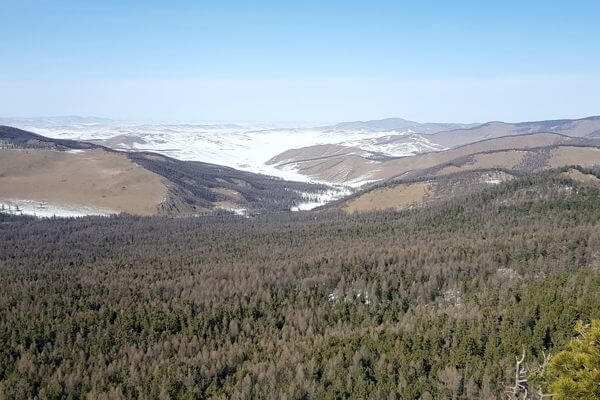
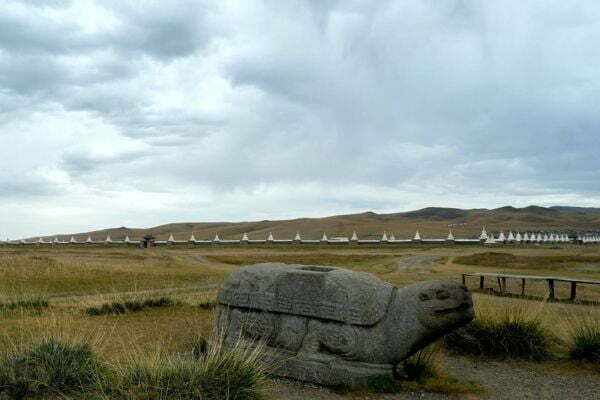
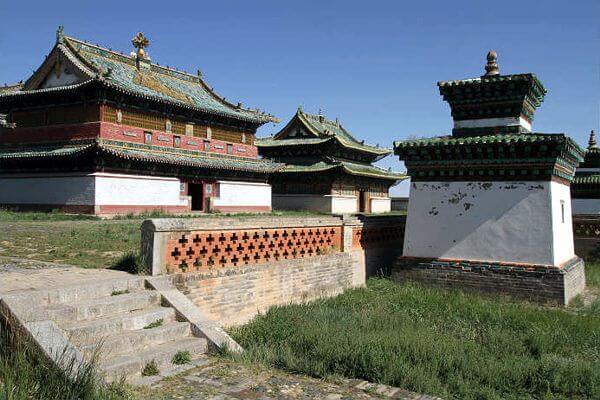
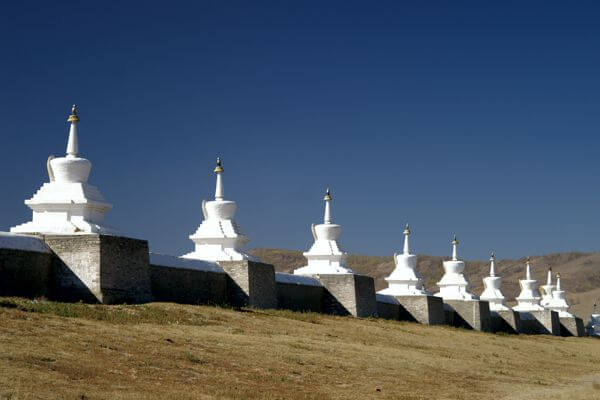

Drive to Ulaanbaatar
We will return to Ulaanbaatar today. We’ll make a short stop at Khogno Khan National Park along the way. In the open steppes, the Khogno Khan mountain range is an impressive massif. Take in the breath-taking views of the plains, sand dunes, and grasslands. You can use your free evening to see as you fit.
(B, L)
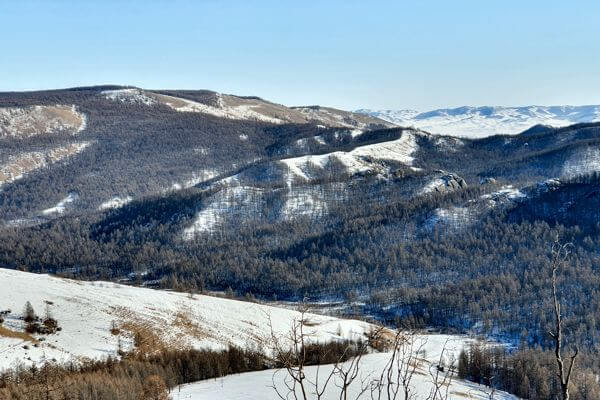
INCLUDED
- Land transportation
- 1 night hotel
- 6 nights family stay
- Meals 7B, 8L, 7D
- Tour guide
-
National park entrance fees/Museum
and Monasteries entrance tickets - Activities as described in the itinerary
NOT INCLUDED
- Hotel in Ulaanbaatar
- City touring
-
Medical, trip insurance and
evacuation costs - Alcoholic and soft drinks
- International airport transfer
